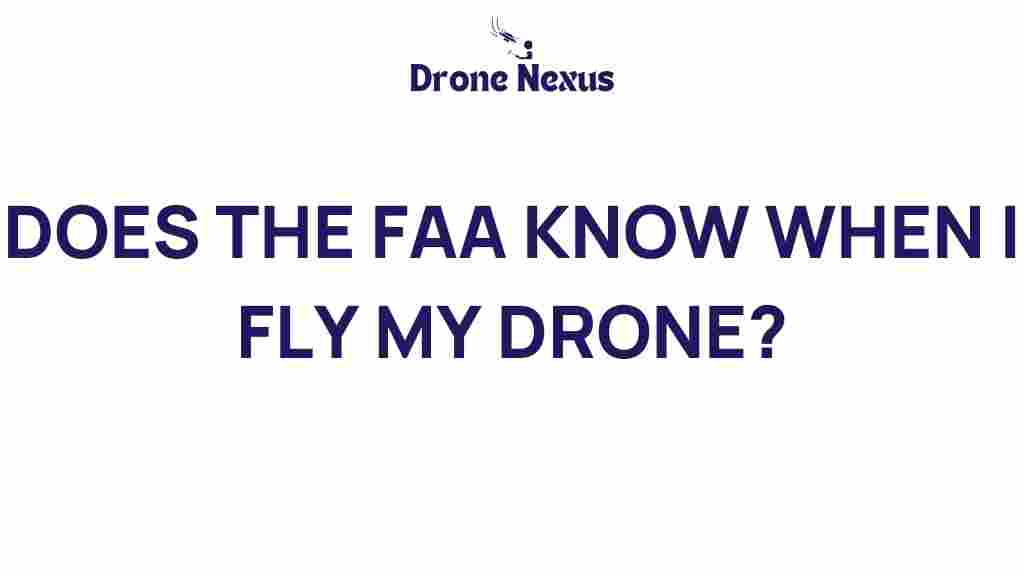Does the FAA Really Track Your Drone Flights?
As drone technology continues to advance and gain popularity, many drone enthusiasts, hobbyists, and professional operators are left wondering about the regulatory landscape surrounding their aerial activities. One of the most pressing questions is whether the Federal Aviation Administration (FAA) actively tracks drone flights. In this article, we aim to unravel the mystery about FAA’s role in monitoring drone operations, what data they collect, and what it means for you as a drone operator.
Understanding the FAA’s Role in Drone Flight Regulation
The FAA is responsible for regulating all aspects of civil aviation in the United States, including the operation of drones, also known as Unmanned Aircraft Systems (UAS). With the increasing number of drones in the skies, the FAA’s role has become even more critical. Here’s what you need to know:
- The FAA establishes rules and guidelines for safe drone operation.
- They issue certifications and registrations for drone operators.
- The FAA is involved in the development of air traffic management systems for drones.
Does the FAA Track Drone Flights?
To directly answer the question: Yes, the FAA has mechanisms in place to track drone flights, but the extent and nature of that tracking may surprise you. Here, we break it down:
1. Registration Requirements
According to FAA regulations, all drones weighing more than 0.55 pounds (250 grams) must be registered. This registration includes:
- Your name
- Your address
- Your email address
- Your drone’s unique identification number
This information is stored in the FAA’s database, allowing them to identify drone operators if necessary. Thus, while the FAA does track who owns a drone, it does not monitor every flight in real time.
2. Remote Identification (Remote ID)
A significant development in drone regulation is the FAA’s Remote ID rule, which is akin to a “drone license plate.” This rule requires drones to broadcast their identification information, location, and altitude. Here’s how it works:
- Drones must transmit their Remote ID information to nearby receivers.
- This information can be accessed by the FAA and law enforcement agencies.
- Remote ID aims to enhance safety and accountability in the airspace.
3. Flight Data Collection
The FAA does not actively monitor every drone flight; however, they do collect data through various means, including:
- Accident and incident reports
- Surveys and research studies on drone operations
- Voluntary data sharing by operators through apps and services
While this data collection is not continuous, it allows the FAA to analyze trends and implement necessary regulations to ensure safety.
What Information Does the FAA Collect?
The FAA primarily focuses on collecting data that can enhance safety and inform regulations. Here are some key types of information they may collect:
- Operator information from registered drones
- Flight data during reported incidents
- Remote ID broadcasts from drones in operation
However, it’s essential to note that the FAA does not track every flight or collect data on all drone operators.
How Does This Affect You as a Drone Operator?
Understanding the FAA’s tracking capabilities can help you navigate your responsibilities as a drone operator. Here are a few things to keep in mind:
- **Registration is Mandatory**: Ensure your drone is registered to comply with FAA regulations.
- **Remote ID Compliance**: Familiarize yourself with the Remote ID requirements and ensure your drone meets these standards.
- **Stay Informed**: Keep up to date with any changes in regulations as the drone industry is rapidly evolving.
Step-by-Step Process for Complying with FAA Regulations
If you’re new to drone flying or want to ensure you’re compliant with FAA regulations, follow these steps:
- Register Your Drone:
- Understand the Rules:
- Implement Remote ID:
- Keep Flight Records:
- Stay Updated:
Visit the FAA Drone Zone to register your drone online.
Read the FAA’s guidelines for recreational and commercial drone use to know what you’re allowed to do.
If your drone requires Remote ID, ensure it has the necessary technology or upgrade it accordingly.
Maintain logs of your flights, including any incidents or accidents, as this information could be crucial for regulatory compliance.
Regularly check the FAA’s website or subscribe to their updates to stay informed about any new regulations or changes.
Troubleshooting Tips for FAA Compliance
Even seasoned drone operators can run into challenges with FAA regulations. Here are some troubleshooting tips:
- Registration Issues: If you encounter problems registering your drone, double-check that all information is accurate and contact FAA support if necessary.
- Remote ID Concerns: If your drone is not broadcasting its Remote ID, refer to the manufacturer’s guidelines to troubleshoot the issue.
- Flight Incident Reporting: If you need to report an incident, ensure you have all relevant details and follow the FAA’s reporting procedures.
Conclusion
In conclusion, while the FAA does not track every drone flight in real time, they have established frameworks for monitoring drone operations through registration and Remote ID requirements. Understanding these regulations is essential for all drone operators to ensure compliance and promote safety in the airspace. By following the outlined steps and staying informed, you can navigate the complex world of drone regulations confidently.
If you have further questions about FAA regulations or need assistance, don’t hesitate to reach out to local drone communities or the FAA directly. Happy flying!
This article is in the category Safety and created by DroneNexus Team
